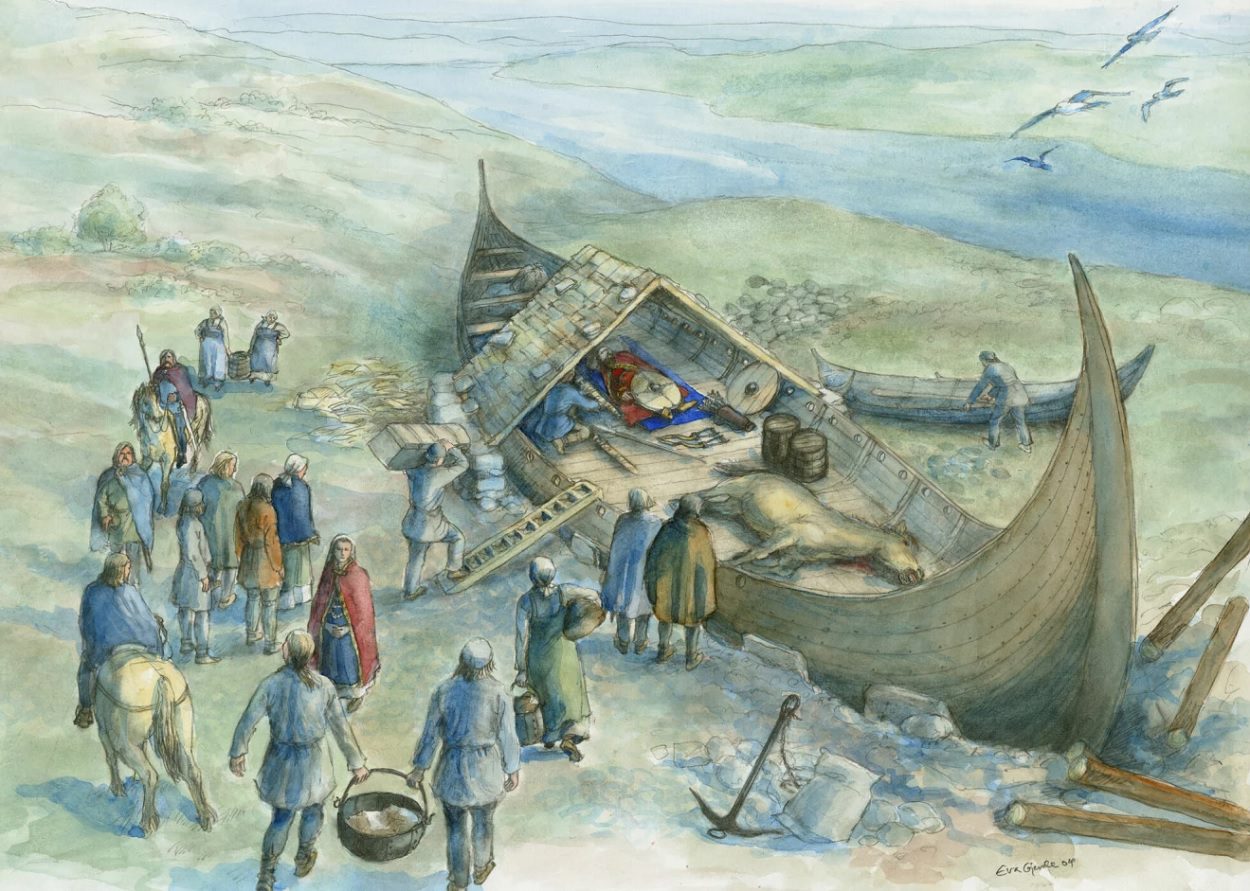Archaeologists have discovered a 20-metre-long Viking ship during excavations of the Salhushaugen burial mound in Karmøy, Norway.
The mound was first investigated over a century ago by the archaeologist, Haakon Shetelig, however, excavations at the time showed no evidence to indicate that a ship was buried in situ.
“He was incredibly disappointed, and nothing more was done with this mound,” says Håkon Reiersen, an archaeologist at the Museum of Archaeology at the University of Stavanger.
Archaeologists returned to the mound in June 2022 to conduct a ground-penetrating radar survey (GPR), a geophysical method that uses radar pulses to image the subsurface and detect archaeological features.
The survey revealed a 20-metre-long ship, similar in size to the famous Oseberg ship, which Shetelig excavated along with Gabriel Gustafson in 1904. The Oseberg ship measures 21.5 metres and was discovered at the Oseberg farm near Tønsberg in Vestfold og Telemark county.
The survey also shows that the ship is located in the centre of the mound where a burial ship of a high-status Viking elite would normally have been buried, suggesting that the discovery is likely an intact burial ship and contains human remains.
This is supported by Shetelig’s earlier excavation where he found a large circular stone slab possibly used as an altar for sacrifices. A similar example was found in the Storhaug mound excavated in 1886, which contained a burial ship and numerous grave goods alongside the burial.
The Storhaug mound dates from AD 770 – which the team have used as a model to suggest preliminary dating of the new discovery to around the late AD 700’s.
Professor Jan Bill, curator of the Viking Ship Collection at the Museum of Cultural History, University of Oslo, told ScienceNorway: “It’s a magnificent find. Karmøy has always stood out as unusual with two ship burial mounds located in the exact same area, so this third ship just adds to the impression that there is something special going on here.”
Header Image Credit : Eva Gjerde – Museum of Archaeology, University of Stavanger





